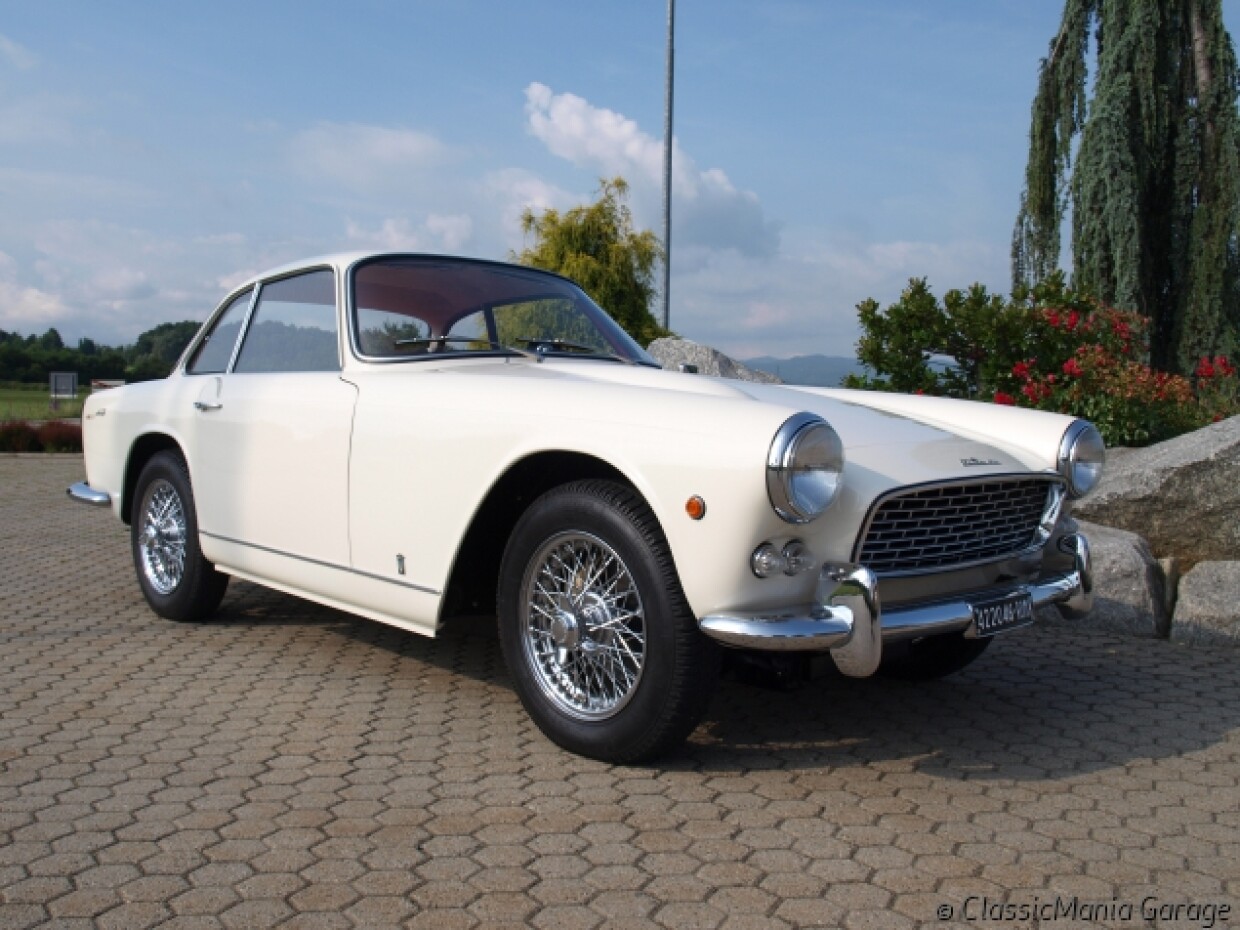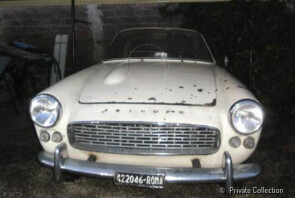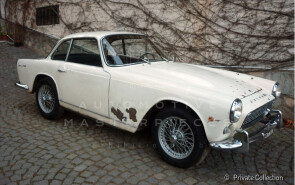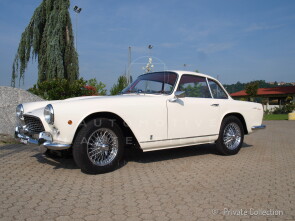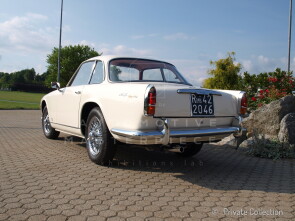
1960 Ruffino Triumph Italia 2000 coupé
ON/OFF
Why am I an Automotive Masterpiece?
The idea of the Italia 2000 coupé came from Comm. Salvadore Ruffino during the end of 1956. At the time, he was the owner of C.E.S.A.C., the Italian company that distributed Standard-Triumph. His aim was to create a sports coupe which had the proven reliability of British engineering and the design artistry of the contemporary Italian coach builders. Ruffino reasoned that Triumph could use a more upscale addition to their existing offerings. He approached Standard-Triumph to supply chassis and mechanical components. Negotiations were initiated with Mr. C. L. P. Edmonds, manager of Standard Triumph for Italy, to require every Triumph dealer to purchase one Italia for a total of 720 cars. With this in mind, Ruffino planned to produce 1000 cars, 500 in 1960 and 500 in 1961. After having received green light, in 1957 Ruffino met Zagato, appointing him to develop the concept of a two seater sport car based on the TR3 chassis and mechanic. He had not found a design that was to his liking and he decided to try a different stylist. Giovanni Michelotti, that had begun his collaboration with Standard, having been informed of the project by Standard, proposed his collaboration to Ruffino. The proposal of the designer looked convincing since the beginning: what Salvatore called “Progetto Italia” was born and with it the “Ruffino S.p.A.”, company for “car assembling and construction”. A prototype was commissioned. With Michelotti's close connections to Vignale, an arrangement was made to produce the cars there but on an assembly line owned by Dr. Ruffino. The resulting two door coupé, now referred to as the "slope-nosed prototype," was well received at the 1958 Turin Motor Show – “Italian artistry and British craftsmanship have come together and produced this new, superlative Italia 2000 Coupé.” The Michelotti sketches still showed the name "Triumph TR3”, but the prototype was accompanied by two new names: Triumph 2000 and Italia. The name Italia was present since the beginning as a precise choice of Ruffino. A second prototype was built with a revised nose and rear roof line. The change was necessary after road tests with the first prototype highlighted some handling issues. A new prototype was presented at the Geneva Motor Show in April 1959 in the Vignale stand, before being sent to Coventry were it had the appreciation of Alick Dick, the boss of Standard Triumph. The official presentation of Italia was at the autumn Turin Motor Show where on the Triumph stand. It received positive feedbacks by the public and by the specialized press, notwithstanding the high price of 2.500.000 Italian lire. These early show cars had many small differences from the later "production" run. To ensure a better support to the new project, the Coventry men created in Turin, corso Francia, the dedicated company Standard-Triumph Italiana S.p.A. Unfortunately, business at this time started to become difficult for Standard-Triumph and it was taken over by Leyland Motors in 1961. The new management did not follow through with the verbal contract that Ruffino had made with Triumph and viewed the Italia project as expensive competition to the soon-to-be released TR4. Ruffino had already begun to produce the cars and decided to continue on his own. The Italia was no longer called the "Triumph Italia" but now became the Italia 2000. The Triumph name remained on the rear wings of the car with the badge "T. M. Triumph." "T. M." stands for “telaio e motore”, which is Italian for “chassis and motor.” Triumph did recognize the Italia and gave it it's very own production specification. Chassis numbers are typical TR3 starting with TS or TSF (for the last thirty). The body was bolted to the chassis and the engine, with serial number marked with an “I”, was not modified: it was the reliable four cylinders, two litres, with distributions with lateral camshaft and reaching about 100 BHP. The gearbox had four gears, the first gear not synchronized, and optional overdrive. Each Italia has a small badge located near the bonnet catch, identifying its place in production. No Italia has matching engine and chassis numbers. The interiors were also very well-finished and comfortable. Options were limited, but included Weber carburetors, overdrive, a telescopic steering wheel, radio, heater, leather interior, Borrani wire wheels and Nardi wood-rim steering wheel. Having lost the commercial support from Coventry, Ruffino tried to build his own dealers network outside Italy, independent from the Triumph one. Dr. Ruffino had his distribution system in place in Italy, France and Germany but needed access to America. Help came in the form of Stutz Plaisted. A Volvo dealer in Massachusetts, Mr. Plaisted became the U.S. importer of the Italia. Body parts were not stocked outside Italy and buyers were required to sign a release form of acknowledgment. The Standard Triumph started objecting to the use of the Triumph 2000 name for the Italia, and also the property of the body design was challenged. All these issued caused a legal argument that ended in a trial, confirming that Ruffino was the only owner of the Italia design. Triumph's delivery of some chassis that did not meet the requirements spelled out in the"Italia Specifications" led Dr. Ruffino to start legal action. Another case was taken to the court, against Carrozzeria Vignale, due to the defects of the cars built by Vignale in Turin. The launch of TR4 in July 1961 created additional difficulties. The new roadster was a competitor in the same brand, being cheaper, mechanically more modern and, differently from the Italia 2000, directly supported by the British brand. Over a three-year production period (mid-1959 to mid-1962) Ruffino througt Vignale produced 329 cars. 323 LHD and six RHD units. After a six-month halt in production, the last run of 30 cars was based on the TR3B chassis. These all used the TSF chassis specification and, as such, retained the 1991cc engine and non-synchro first gear transmission of the TR3.
Chassis TS63980-LCO ("LCO" stands for Left Chassis Only) is the 97th Italia built and delivered new in Rome. This is the Vignale body number 95 and was finished in “bianco Andalusia” (Andalusia white) color. It is one of 323 LHD built and one of the approximately 100 still existing. An Alitalia pilot owned it for 52 years.
